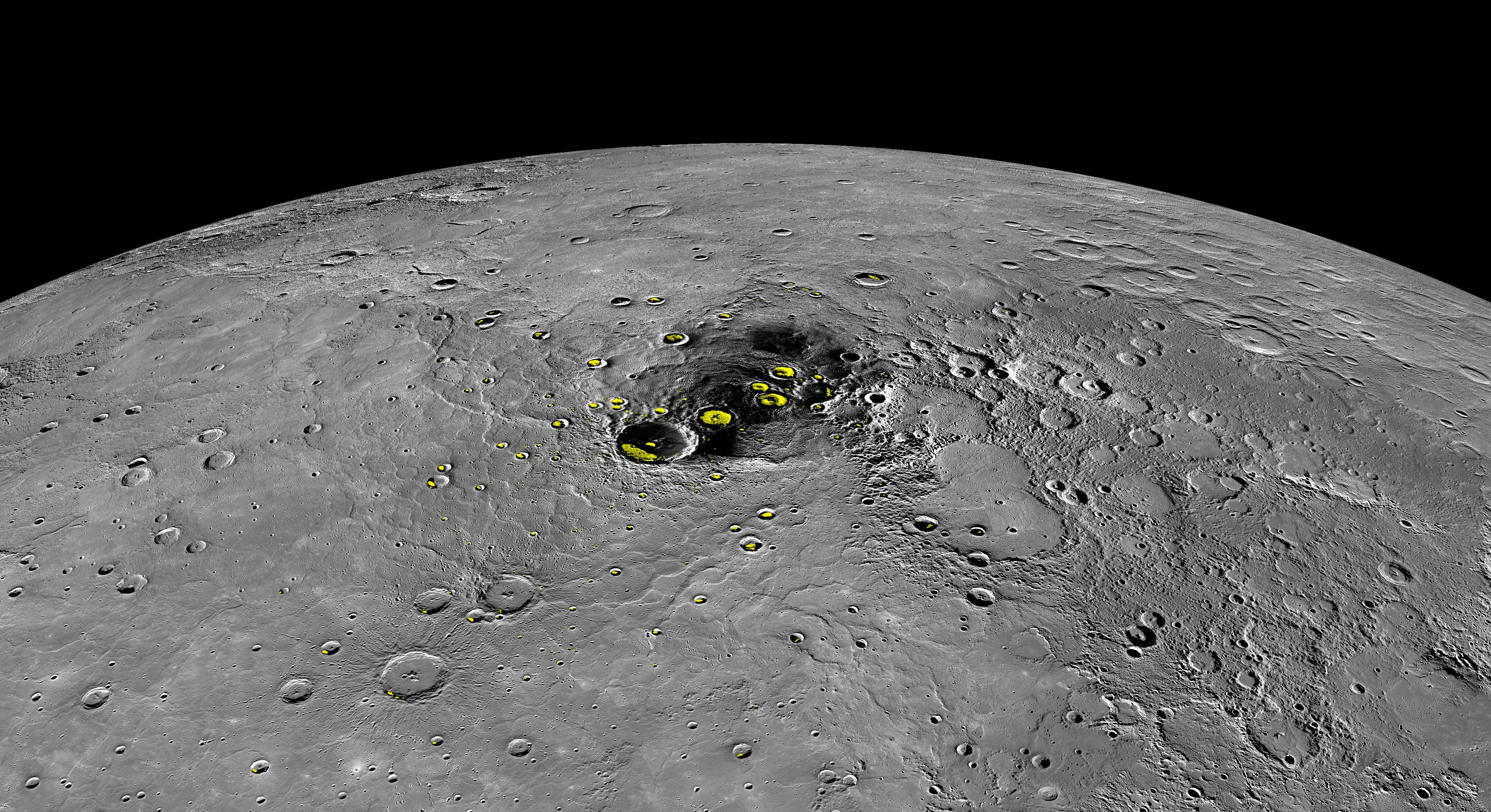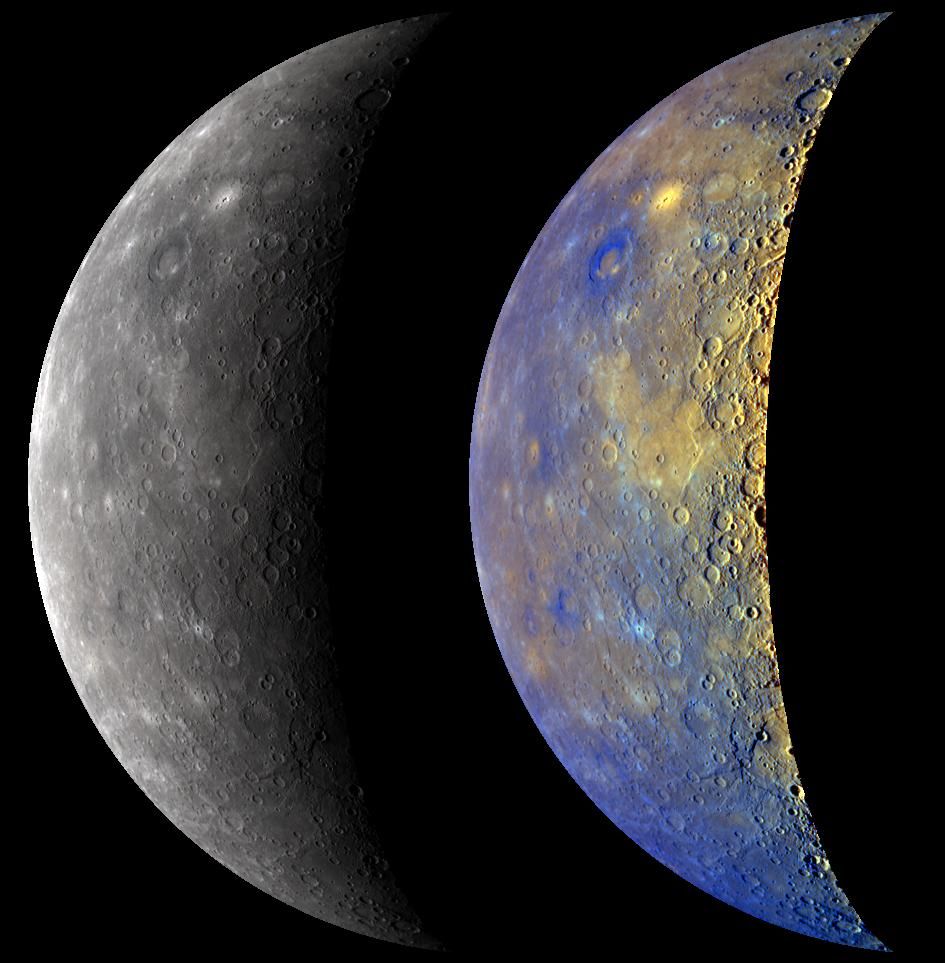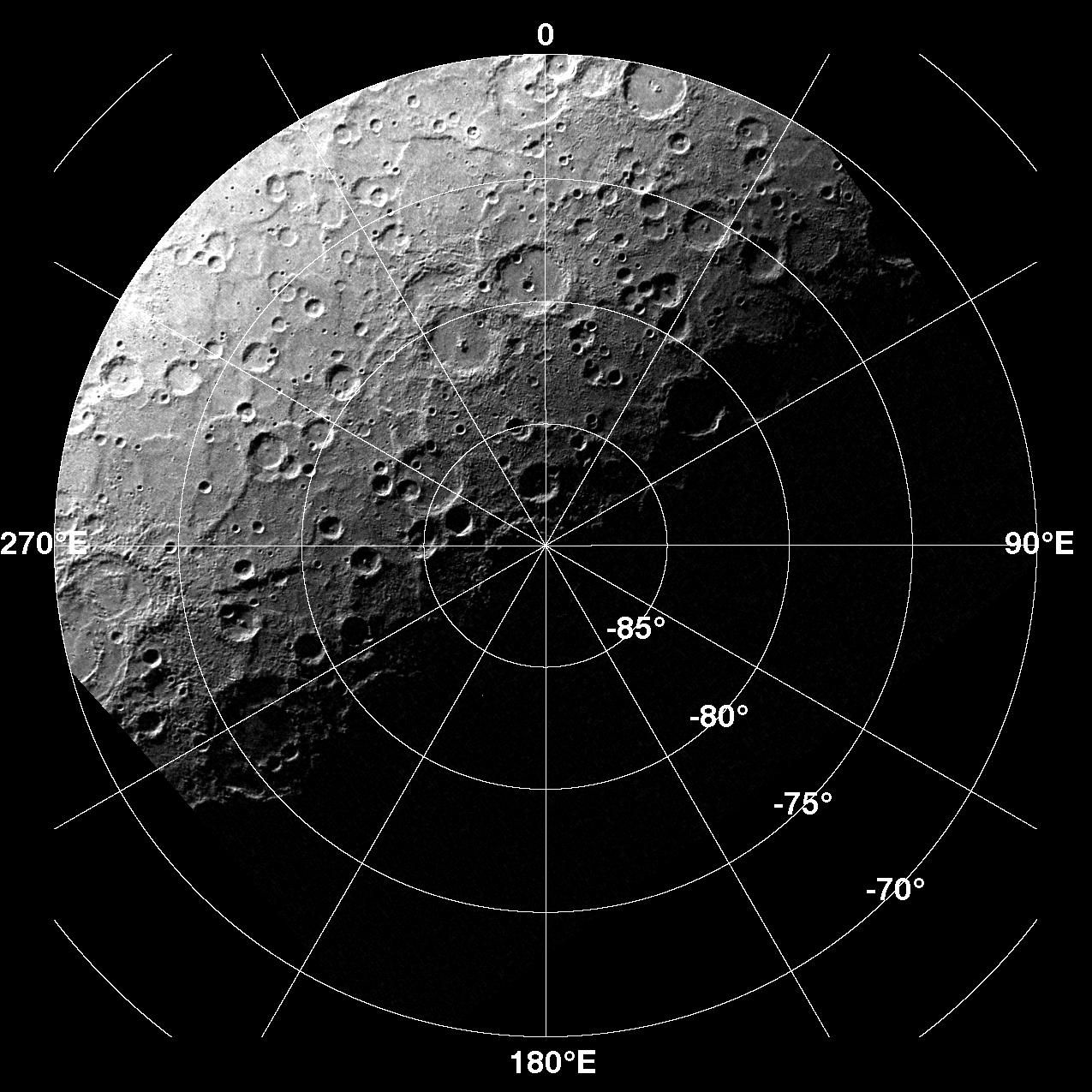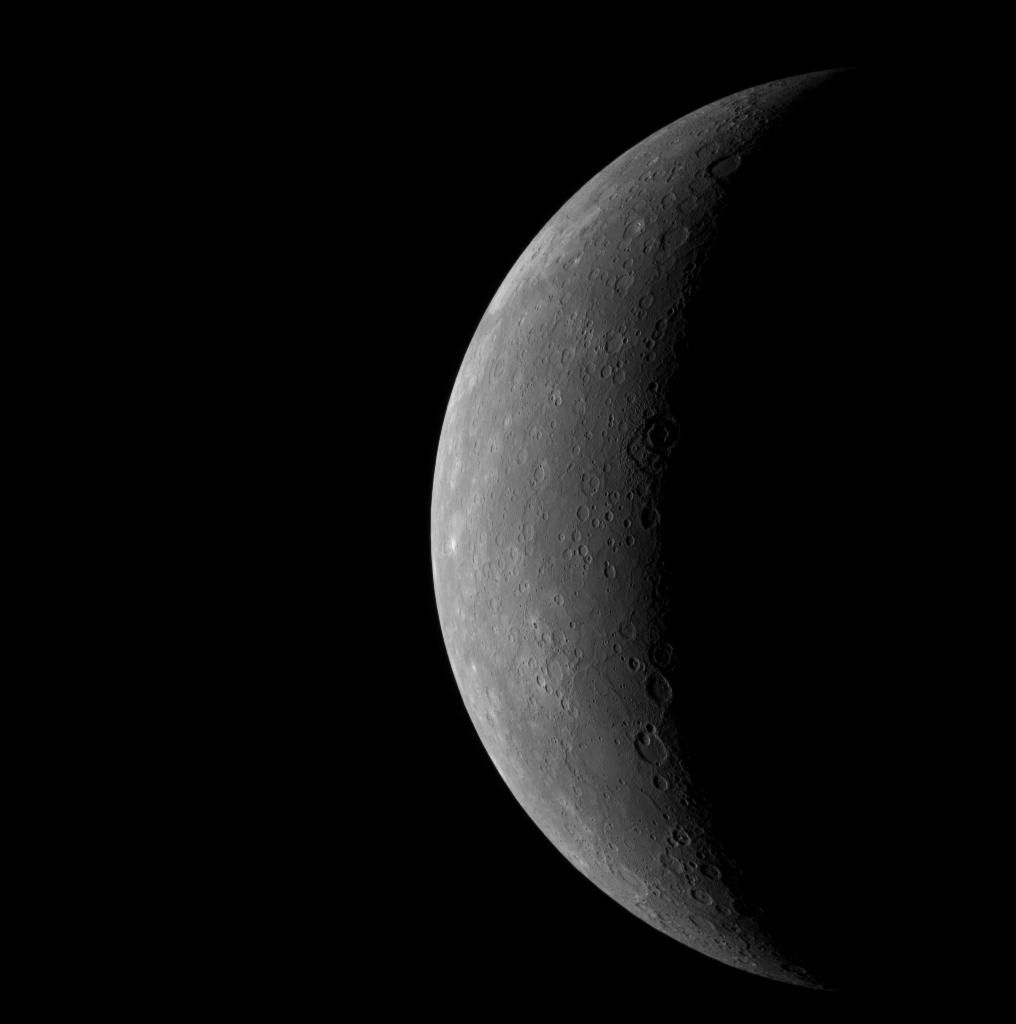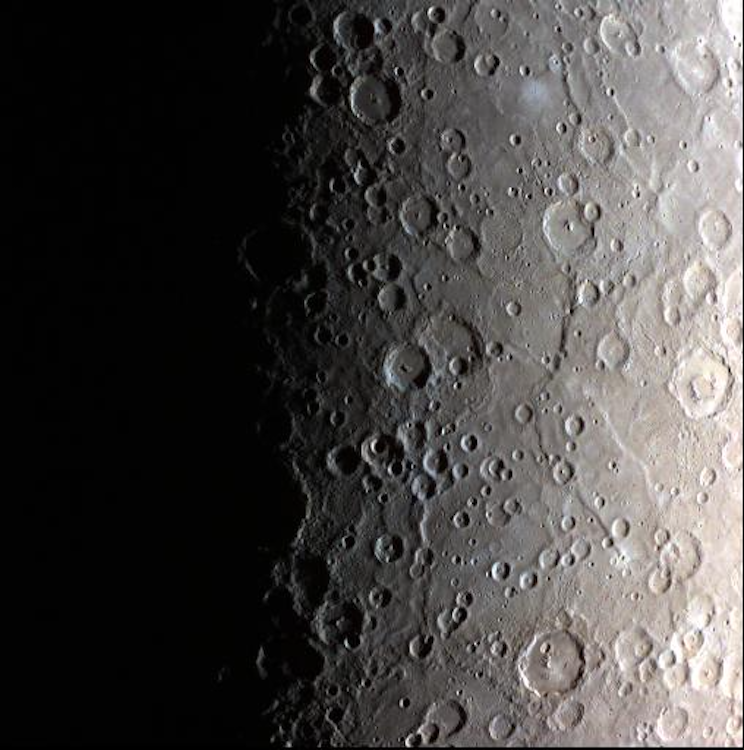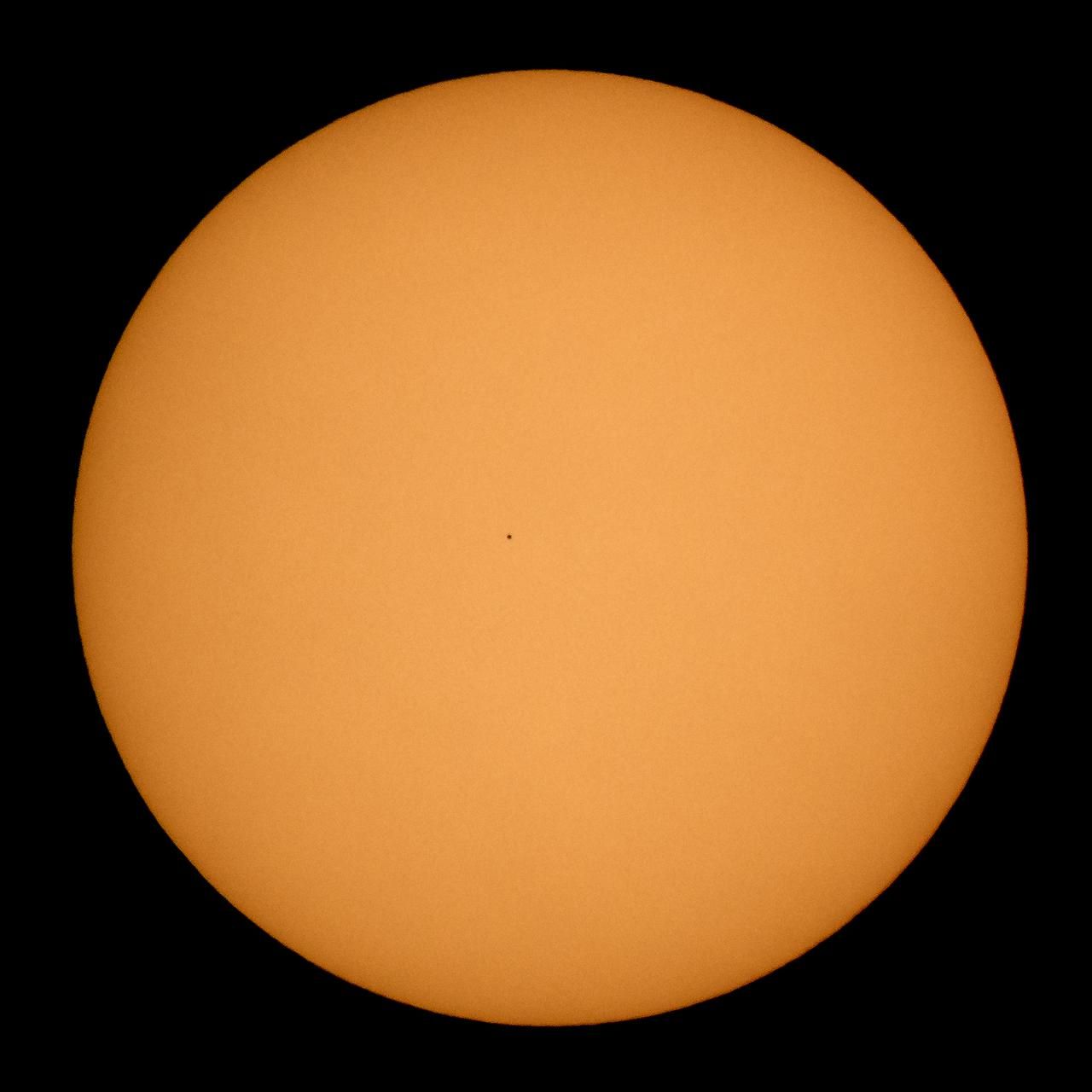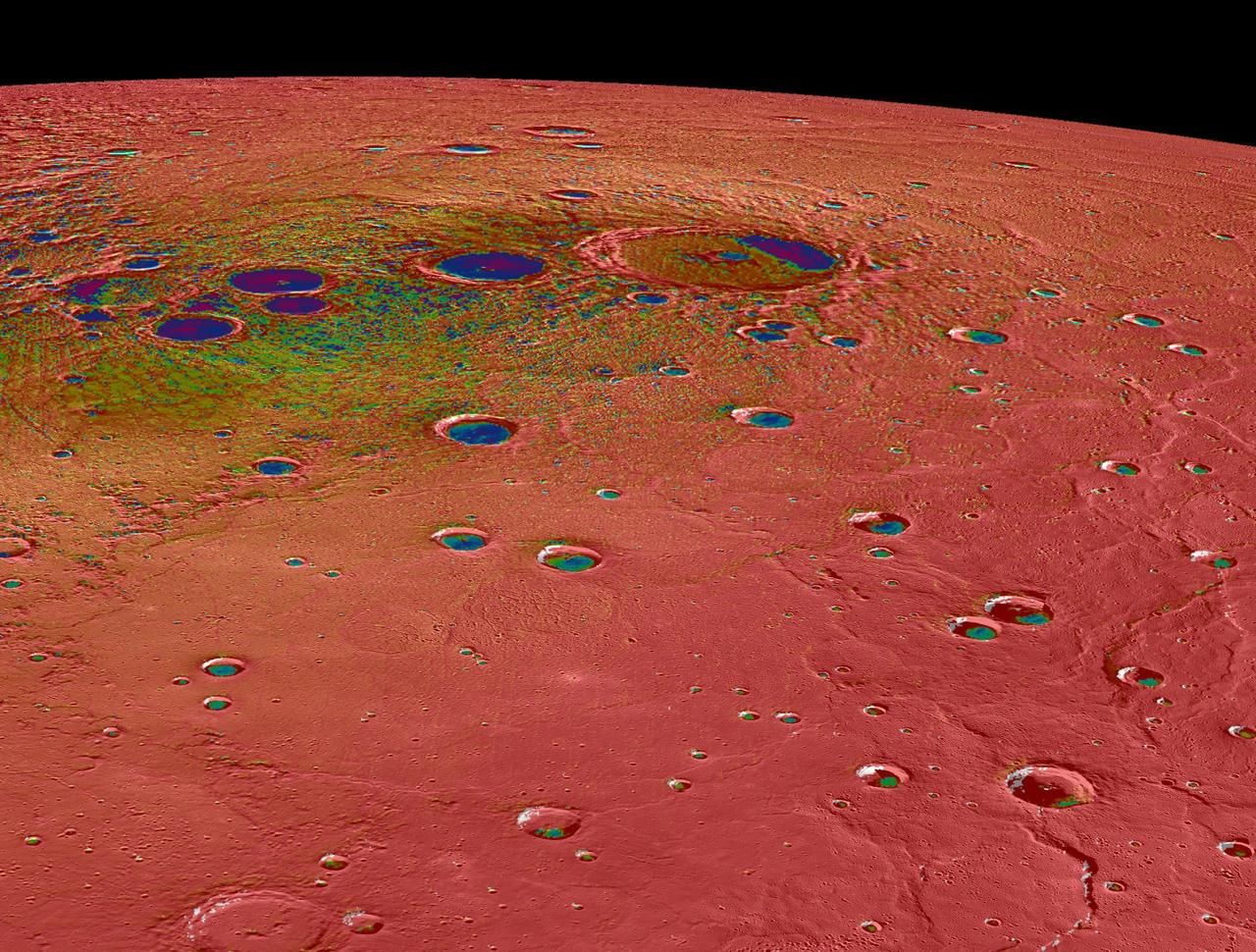I remember learning two facts about Mercury in quick succession: that it was extremely hot on one side and extremely cold on the other, that the planet rotates very slowly. I always wondered if there was a zone somewhere in the middle where the temperature was moderate enough to survive. So I did the math.
Mercury Has Huge Extremes of Temperature
Mercury is the closest planet to the Sun, coming as close as 28.6 million miles at its closest point (perihelion) and moving as far away as 43.4 million miles at its furthest point (aphelion). That means that even at its furthest from the Sun it’s still less than half the distance from our star as the planet you’re standing on right now.
It’s no surprise then, that Mercury can get very, very hot. Daytime temperatures on Mercury can reach 800F (430C) which is hot enough that if you have a piece of lead or zinc with you, it’s going to melt.
What is more of a surprise is that, despite sitting so close to the Sun, Mercury can get seriously cold. Since Mercury doesn’t have an atmosphere to trap the heat at night, the side of Mercury that’s facing away from the Sun can get as cold as -290F (-180C). In fact, images captured of Mercury’s northern pole by the MESSENGER space probe in 2015 show what may be water ice on the planet closest to the Sun.
Somewhere on Mercury the Temperature is Just Right
Mercury has the most extreme range of temperatures of any planet in our solar system, with the difference in temperature across the planet reaching well over 1000F. Since Mercury doesn’t have an atmosphere to retain and distribute heat, the changes in temperature can also be fairly abrupt.
However, near the terminator, which is the boundary between the night and day sides of the planet, there are some areas where the temperature can fall in between the two extremes. It’s estimated that some regions can have a temperature range between around -150F and 120F (roughly -100C to 50C).
According to Neil Armstrong himself, the temperatures that the Apollo astronauts faced on the moon were over 200F. This means that there are “Goldilocks” zones on Mercury where the temperature is not too hot and not too cold, but just right for humans to be able to survive.
Mercury Takes Almost Two Months to Rotate
Here’s the problem, however: Mercury doesn’t stand still. The temperature range is so high that as the planet rotates, the Goldilocks zone will continue to move across the planet’s surface. If you stand still, you’re going to end up moving into a region of extreme heat or extreme cold.
The good news is that the Goldilocks zone isn’t going to move that quickly. That’s because Mercury rotates much, much slower than our planet does. The Earth performs one rotation on its axis every 23 hours, 56 minutes, and 4 seconds, and if you’re wondering why that number isn’t exactly 24 hours, you’ll find out later.
In comparison, Mercury rotates on its axis once every 59 days, so it takes nearly two months to complete a full rotation. If you’re trying to cheat death on Mercury, this is very promising, but the news gets even better.
Mercury’s Solar Day is Even Longer
If the Earth rotates on its axis once every 23 hours, 56 minutes, and 4 seconds, why is a day 24 hours long? That’s because rotating on its axis isn’t the only motion that the Earth is making; it’s also orbiting around the Sun.
During the 23 hours, 56 minutes and 4 seconds that the Earth has taken to rotate, it’s also traveled around 1.6 million miles around its orbital path, so the Sun is in a slightly different position to where it was at the start of that rotation.
This means if you start timing when the Sun is directly overhead, after 23 hours, 56 minutes, and 4 seconds, the Sun isn’t quite directly overhead again. That only happens after—you guessed it—24 hours exactly. These two things are known as the sidereal day (the time it takes to complete a full rotation relative to fixed stars) and the solar day (the time it takes for the Sun to return to the same position in the sky).
Earth’s sidereal day and solar day are fairly similar, but this isn’t the case for Mercury. Mercury’s sidereal day is about 59 days, but for the Sun to return to the same position in the sky, it takes much longer: about 176 days. Mercury orbits the Sun in only 88 days, so as strange as it seems to us, Mercury’s day is almost double the length of its year.
You Should Be Able to Outpace the Sun at Walking Speed
This is where things get tricky. Mercury’s orbit is highly elliptical, meaning that it moves closer to and further away from the Sun during its orbit. Its speed around the Sun also changes significantly. Mercury has what is called a 3:2 resonance, meaning it rotates on its axis three times for every two orbits around the Sun. These factors lead to some strange phenomena which I’ll get into shortly.
For my purposes, however, all I really want to know is whether the Goldilocks zone moves slowly enough that I can keep up with it on foot. I’m going to make things very simple, then, and assume that the Sun moves across the sky at the same rate throughout those 176 days.
The circumference of Mercury is roughly 9,500 miles around its equator. Since a solar day on Mercury is about 176 days, or 4,224 hours, the Goldilocks zone should move across Mercury at a speed of 9500/4224, or 2.25mph.
The average walking speed for a healthy adult is around 3mph, so in theory, it should be possible to stay within the Goldilocks zone on Mercury simply by continuing to walk. Gravity on Mercury is about 38% of that on Earth, so even in a spacesuit, it should be possible to outpace the Sun.
You Can Walk Even Slower Nearer the Poles
The above calculations are based on walking around Mercury at its widest point. However, the closer you get to the poles, the slower you’ll be able to walk.
Mercury’s axis is close to vertical, unlike Earth’s, so Mercury doesn’t experience seasons in the same way that we do. The further north or south you go, the shorter the distance you’d need to walk to complete a lap of the planet perpendicular to its axis. It means that depending on how far north or south you are, you could walk even more slowly and still stay in the Goldilocks zone.
You Even Get a Chance to Rest
This is where things get strange. Due to Mercury’s 3:2 resonance, and its highly elliptical orbit, the way the Sun seems to behave in the sky above Mercury can be very strange.
As Mercury nears perihelion, the speed at which Mercury is rotating exactly matches the speed at which Mercury is moving around the Sun. At perihelion itself, the orbital speed is actually faster than the rotational speed. This means that a “day” on Mercury has some unusual moments.
The Sun rises and moves across the sky, just as it does on Earth. When the orbital and rotational speeds match, however, the Sun appears to stop moving across the sky, and then as the orbital speed exceeds rotational speed, the Sun starts to move backwards in the other direction. It then stops and starts moving in the original direction again, before setting.
This means that there is a period during Mercury’s solar day when the Sun stays still in the sky. This is great news if you’re stuck on the surface, as you can afford to take a little rest while the Goldilocks zone stops moving temporarily.
There Is Plenty More Than Temperature to Kill You on Mercury
All of the above indicates that in theory, despite the extreme temperatures on Mercury, it would be possible for humans to survive on the surface under the right circumstances. You’d have to be very careful about where you were walking, however. Fall into a crater that’s further outside the reach of the sun, and you might find that the temperature plummets to levels beyond the limits of your spacesuit.
Cheating death on Mercury by walking slowly around the planet is not something I would recommend trying, however. Even if the extremes of temperature don’t kill you, there are plenty of other things that could.
The lack of atmosphere means that you have no protection against solar radiation. There’s also nothing to burn up anything that approaches the planet, so you’re at risk of getting taken out by micrometeorites at any moment.
Being that close to the Sun, the impact of solar flares and coronal mass ejections would be unlikely to be good for your health either, although Mercury’s weak magnetic field might offer a little protection.
It seems that the math checks out. While these simple calculations don’t consider the strange patterns of Mercury’s day, in theory, you could cheat death on Mercury just by walking.
You’d need to find the Goldilocks zone first and then manage to stay within it, and you’d have to keep moving, although you should be able to have some rest. In reality, however, you’d probably be dead for other reasons long before your feet got tired. My advice? Try not to get stranded on Mercury in the first place.


